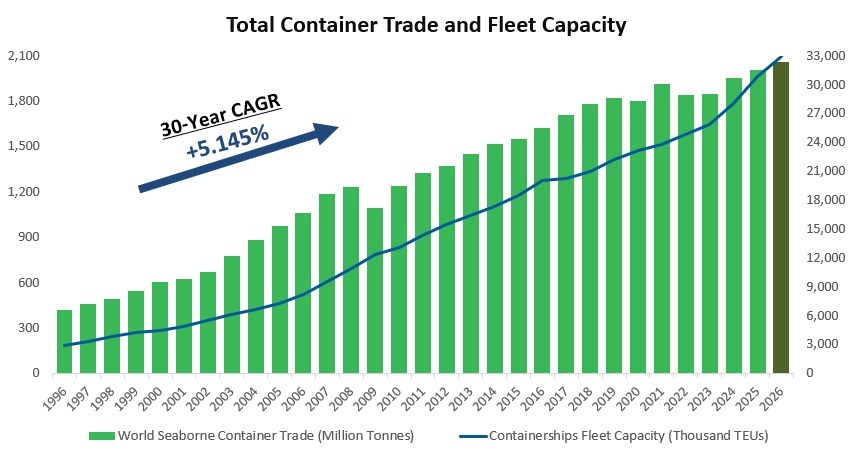Understanding Container Feeder Vessels

Container liner companies operate scheduled services using owned or chartered vessels, aimed at attaining an optimal frequency and utilization level. Container liners have increasingly chartered-in a greater portion of their fleet from third party owners on competitive charters rather, than purchasing vessels outright.
The specification of vessel deployed on a certain route depends on the size and type of trade as well as the port infrastructure, size and access limitations. Typically large vessels serve routes between major ports, while feeder vessels make connections between the major hub ports and regional ports.
Feeder containerships form a vital link in the supply logistics chain and are the backbone of the “first & last marine mile”.
The role of Feeders in the marine supply chain

Advantages of Container Shipping
Container shipping has been the driving force in globalization for the past 50 years. Its standardization has allowed for integration with the onshore transport systems and has lead to a great reduction of costs in international trade and increase in efficiency.
Advantages of container shipping compared with other shipping modes include: less cargo handling, efficient port turnaround, highly developed intermodal network reduced shipping time and cargo loss. Container shipping has a fundamental position in global trade; it is one of the fastest growing sectors in shipping, benefiting from a shift in bulk cargo transport to unitization.
The growth of containerization over the past quarter century has been exponential.

Lowest CO2 emissions among logistics alternatives

Containerization is a low-carbon form of transportation, with Green House Gas (GHG) emissions per ton-mile of cargo carried significantly lower than that for other modes of freight transport, such as air, road, and rail.
The chart shows the average carbon intensity of different forms of transport derived in the IMO’s Second GHG study in 2009.
While trade shipping accounts for 90% of world trade by volume, it is estimated that it produces less than 3% GHG emissions.

